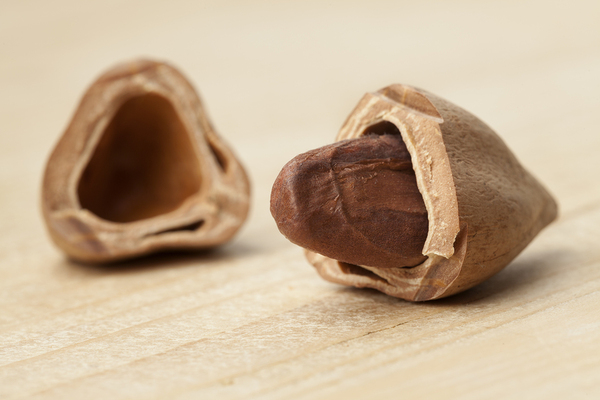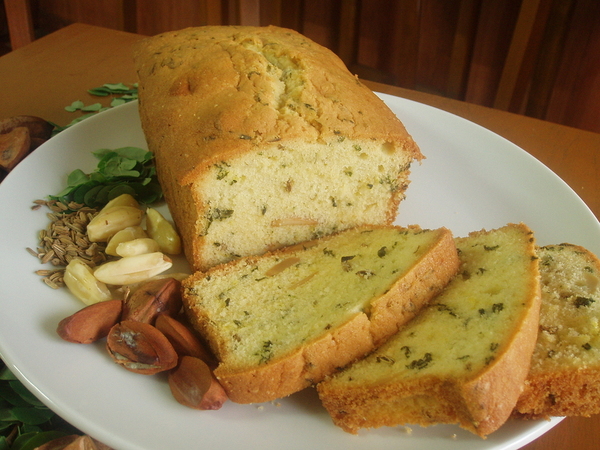


If you haven't heard of or tried pili nuts yet, you have something to look forward to. The pili nut, also known as Pacific almond, Java almond, ngali, and Kenari nut can be eaten raw or roasted. The flavor of pili nuts is often compared to a buttery almond. Pili trees are native to maritime Southeast Asia, Northern Australia, and Papua New Guinea. They are also grown commercially in the Philippines for the delicious and healthy nuts they produce. The pili nut is a nutritional powerhouse that happens to be delicious too. Pili nuts are teardrop shaped and a couple of inches long. They’re chock full of healthy fats and packed with nutritional benefits. The pulp oil can be extracted and used in cooking and cosmetic products, while the shells can be used as a growth medium for exotic plants like orchids. The sap of the pili tree is flammable and can be used to make inks and plastics. The wood of the pili tree is also used to make furniture, so the trees are remarkably versatile as well as producing its delicious nut. Here’s what you should know about this extraordinary natural food. The Impressive Pili Nut's Nutritional Profile One cup of dried pili nuts provides an excellent nutritional boost. Not only can you get one-quarter of your daily requirement for protein, but 17% of the recommended daily amount of calcium, 53% of the iron you need, and 86% of the recommended daily intake of magnesium. They are also high in phosphorous, potassium, zinc, copper, and manganese, as well as B vitamins. As for amino acids, pili nuts are rich in tryptophan, threonine, isoleucine, leucine, lysine, valine, and histidine. They rival macadamia nuts in their high fat content, making them an excellent addition to a low carb, high fat or ketogenic diet. Potential Health Benefits of Pili Nuts Their nutritional profile should make them eligible to be listed as a superfood. The amino acids they contain help balance blood glucose levels and regulate energy. Magnesium benefits the nerves, bones, and muscle tissue, while omega fatty acids help protect against cardiovascular disease and inflammation, while improving cognitive function. The fact that these nuts are so iron-rich makes them a terrific source of plant-based iron. The fiber naturally found in pili nuts helps keep the gastrointestinal tract functioning regularly and that fiber also provides an excellent source fuel for your healthy gut bacteria.  Pili nuts can be incorporated into many savory and sweet recipes. Pesto Sauce Pili nut pesto is a tasty way to put pili nuts to work as a versatile spread and garnish, and it’s quick and easy to make. Basil leaves, garlic, pili nuts, raw cashews, olive oil, lemon juice, salt and pepper combine to make a dietary addition that goes terrific with any number of healthy dishes. The taste is described as rich and buttery, plus it’s paleo-friendly. Making it is a simple matter of putting the ingredients into a food processor, blending until the consistency is creamy, then seasoning. The flavors continue to merge over time, and it keeps in the refrigerator for up to a week, tasting better every day. Nut Cheese Pili nut cheese is described as tasting similar to mozzarella, but with a spreadable consistency. The pili nuts need to be skinless, and the easiest way to get the skin off is to boil them. The only additional ingredients for this recipe include water, acidophilus probiotic, salt, and citrus juice. Grown in Philippine volcanic soil, pili nuts are healthy, delicious snacks that are high in protein, good for you fats, calcium, and potassium. They make wonderful additions to desserts and baked goods or eaten raw or roasted as a snack. If you haven't tried pili nuts yet, I strongly recommend giving them a try. You can purchase them raw here: Polynesian pili nuts or roasted and enhanced with flavors here: Sprouted pili nuts.
Pili nuts can be incorporated into many savory and sweet recipes. Pesto Sauce Pili nut pesto is a tasty way to put pili nuts to work as a versatile spread and garnish, and it’s quick and easy to make. Basil leaves, garlic, pili nuts, raw cashews, olive oil, lemon juice, salt and pepper combine to make a dietary addition that goes terrific with any number of healthy dishes. The taste is described as rich and buttery, plus it’s paleo-friendly. Making it is a simple matter of putting the ingredients into a food processor, blending until the consistency is creamy, then seasoning. The flavors continue to merge over time, and it keeps in the refrigerator for up to a week, tasting better every day. Nut Cheese Pili nut cheese is described as tasting similar to mozzarella, but with a spreadable consistency. The pili nuts need to be skinless, and the easiest way to get the skin off is to boil them. The only additional ingredients for this recipe include water, acidophilus probiotic, salt, and citrus juice. Grown in Philippine volcanic soil, pili nuts are healthy, delicious snacks that are high in protein, good for you fats, calcium, and potassium. They make wonderful additions to desserts and baked goods or eaten raw or roasted as a snack. If you haven't tried pili nuts yet, I strongly recommend giving them a try. You can purchase them raw here: Polynesian pili nuts or roasted and enhanced with flavors here: Sprouted pili nuts.